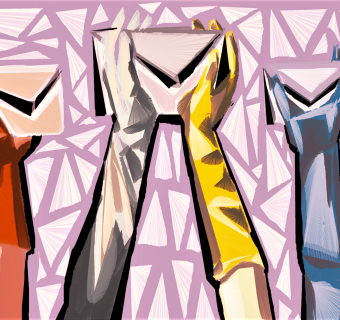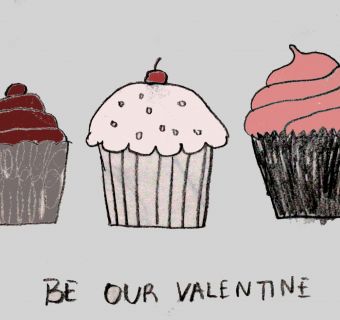After spending my weekends selling everything from eyeliner to hairspray at Ulta Beauty (for the past 18 months) I’ve seen trends come and go. One minute, we have boxes of product overstock crowding the back room, the next we’ve found a sudden inability to keep that same product in stock for even months at a time, all because of one influencer mentioning its name. Often one brand debuts a product, and within nine months other brands release their own copy-cat products (commonly referred to as dupes). The trend trickles down until every shelf features a take on the idea: liquid lipsticks have become lip oils and lip stains; brow pomade has been replaced with brow wax; and bronzer trumps contour.
Even in weeks when I clock in over 40 hours on the floor talking with guests, I can’t keep up with the social media buzzwords that populate the vocabulary of an average customer in 2022 (I mean, what the hell is slugging?). It certainly keeps the job interesting, and I won’t pretend I don’t look forward to talking trends with my coworkers, but it’s a big responsibility to have to keep up with everything, all the time.
This issue, we step back from the “everything, all the time” mentality to hone in on what makes a trend compelling, dangerous, ubiquitous and everything in between. Interconnectedness may give way to a hot topic, but what does a topic give to those who subscribe to its meaning? If we collectively decide what is worth talking about, how do those individual decisions collect over time to show us what we should be talking about? If trends are too frivolous to study, how else do we adequately grapple with their effects?
In “How Can You Become TikTok’s Latest Trend? Or Should You Even Want To?” Miriella Jiffar discusses the TikTok sensation of “Clean Girl” and “That Girl” aesthetics, asking if such seemingly harmless video trends have a deeper history, and if they may carry negative or problematic assumptions. Cheyenne Butler discusses her own case study, not of a trend but rather the death of a trend. In “God Save the BBL: 5 Signs of the BBL Era Ending” she not only enumerates the ways Brazilian Butt Lifts (colloquially known as BBLs) have begun to fade from public view, but also dares to interrogate the societal power dynamics that have shaped the lifecycle of this trend, from birth to inevitable death.
Music allows us to connect deeply with one another, even as it helps us define individual identity. Kiki McLaughlin explores this tension in “Songs We Dance To,” a look at college students’ favorite dance tunes. Hailey Robbins also writes about musical celebration, in “Heavenly Plagues and Demonic Rituals: Florence Goes on Tour,” her reflection on a Florence and the Machine concert, and the contradictions and catharsis of that quasi-pagan dance experience.
In a world oversaturated with declarations of love, and a social media blitz of “boyfriend reveals” and couples challenges, Jasmine Wang writes a cutting, witty open letter to happy couples–from her metaphorical deathbed. “Wake Up and Break Up” is the satirical, hysterical letter we all wish we could have written at one time or another, but with a heartfelt message about loneliness and the importance of non-romantic love at its core.
In her nuanced, bold interviews with UVA DEI employees, “How Much Do They Care?" Bailey Middleton asks the important question of why so many Black students feel unsafe on grounds, in spite of a recent uptick in “Diversity, Equity, and Inclusion” programs across many divisions of the University. How do the nuances of operations in these organizations, as well as Thomas Jefferson’s looming legacy in the University community affect these staff members’ ability to help students? And Eryn Rhodes asks how much you should care – about the offensive history and content of the popular platform Barstool Sports, in “5 Things You Should Know About Barstool Sports if You Care About Being a Good Person.” What are the larger trends in how they operate, and how do those trends desensitize the general public and their readership?
Thank you to Mary Esselman and Addie Gilligan for all they do to keep Iris trendy in our own ways, and to KJ Villanueva for her artistic expertise. Of course, thank you for your time and generosity in reading our newest issue.








